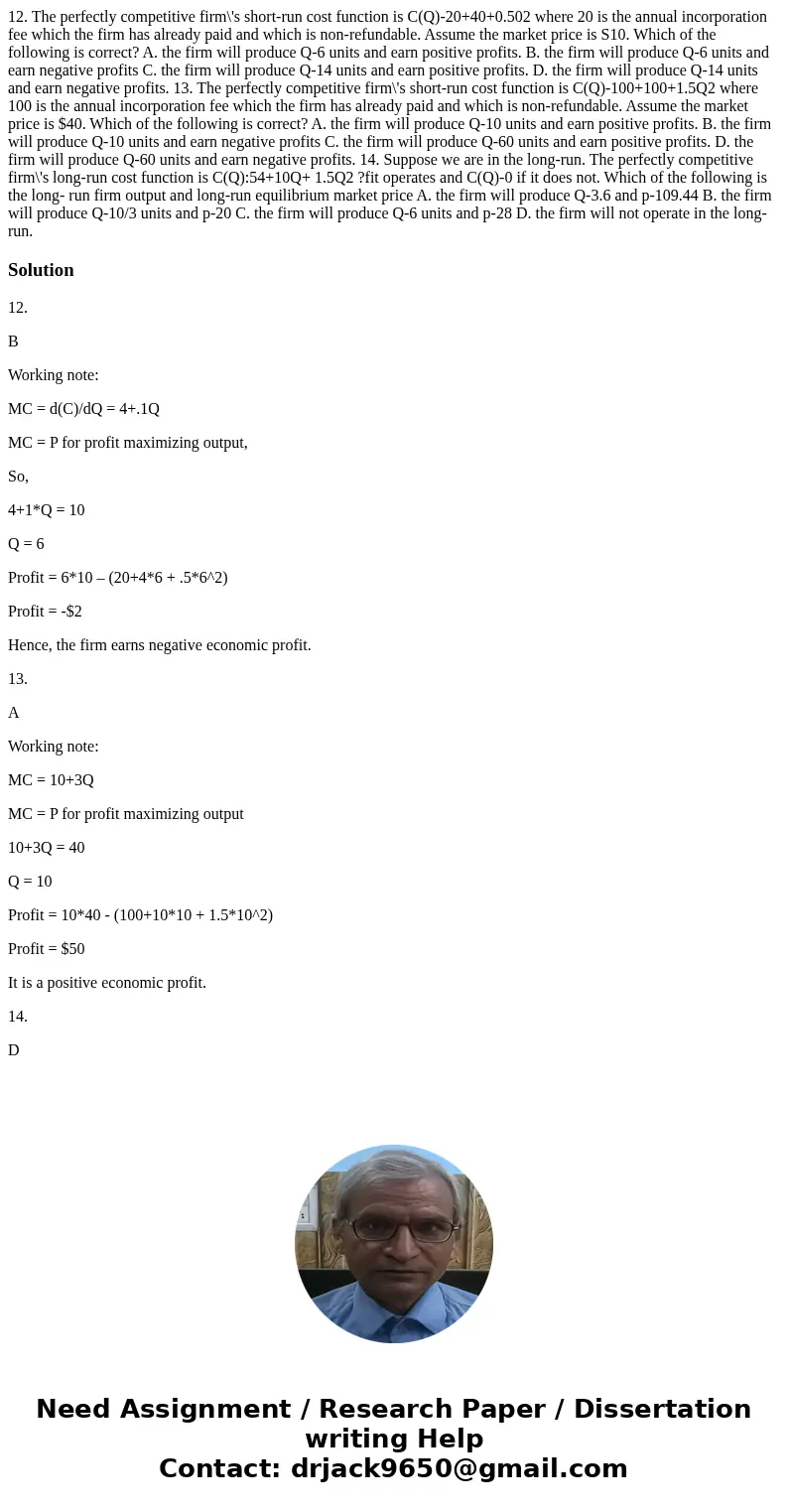12 The perfectly competitive firms shortrun cost function is
12. The perfectly competitive firm\'s short-run cost function is C(Q)-20+40+0.502 where 20 is the annual incorporation fee which the firm has already paid and which is non-refundable. Assume the market price is S10. Which of the following is correct? A. the firm will produce Q-6 units and earn positive profits. B. the firm will produce Q-6 units and earn negative profits C. the firm will produce Q-14 units and earn positive profits. D. the firm will produce Q-14 units and earn negative profits. 13. The perfectly competitive firm\'s short-run cost function is C(Q)-100+100+1.5Q2 where 100 is the annual incorporation fee which the firm has already paid and which is non-refundable. Assume the market price is $40. Which of the following is correct? A. the firm will produce Q-10 units and earn positive profits. B. the firm will produce Q-10 units and earn negative profits C. the firm will produce Q-60 units and earn positive profits. D. the firm will produce Q-60 units and earn negative profits. 14. Suppose we are in the long-run. The perfectly competitive firm\'s long-run cost function is C(Q):54+10Q+ 1.5Q2 ?fit operates and C(Q)-0 if it does not. Which of the following is the long- run firm output and long-run equilibrium market price A. the firm will produce Q-3.6 and p-109.44 B. the firm will produce Q-10/3 units and p-20 C. the firm will produce Q-6 units and p-28 D. the firm will not operate in the long-run. 
Solution
12.
B
Working note:
MC = d(C)/dQ = 4+.1Q
MC = P for profit maximizing output,
So,
4+1*Q = 10
Q = 6
Profit = 6*10 – (20+4*6 + .5*6^2)
Profit = -$2
Hence, the firm earns negative economic profit.
13.
A
Working note:
MC = 10+3Q
MC = P for profit maximizing output
10+3Q = 40
Q = 10
Profit = 10*40 - (100+10*10 + 1.5*10^2)
Profit = $50
It is a positive economic profit.
14.
D

 Homework Sourse
Homework Sourse